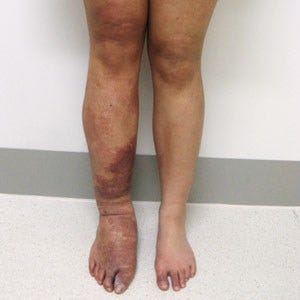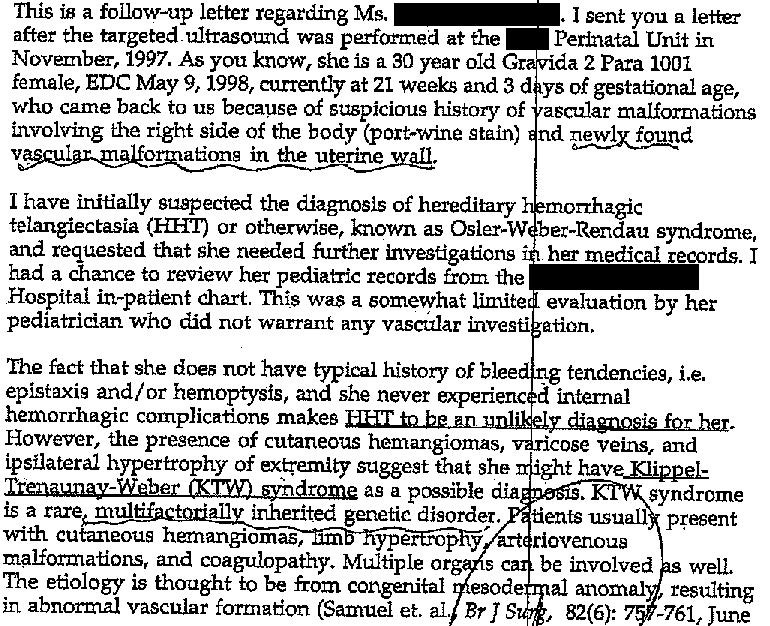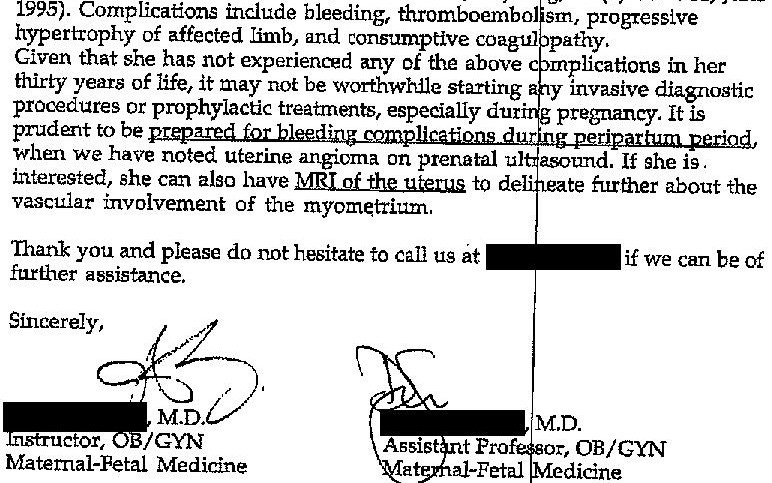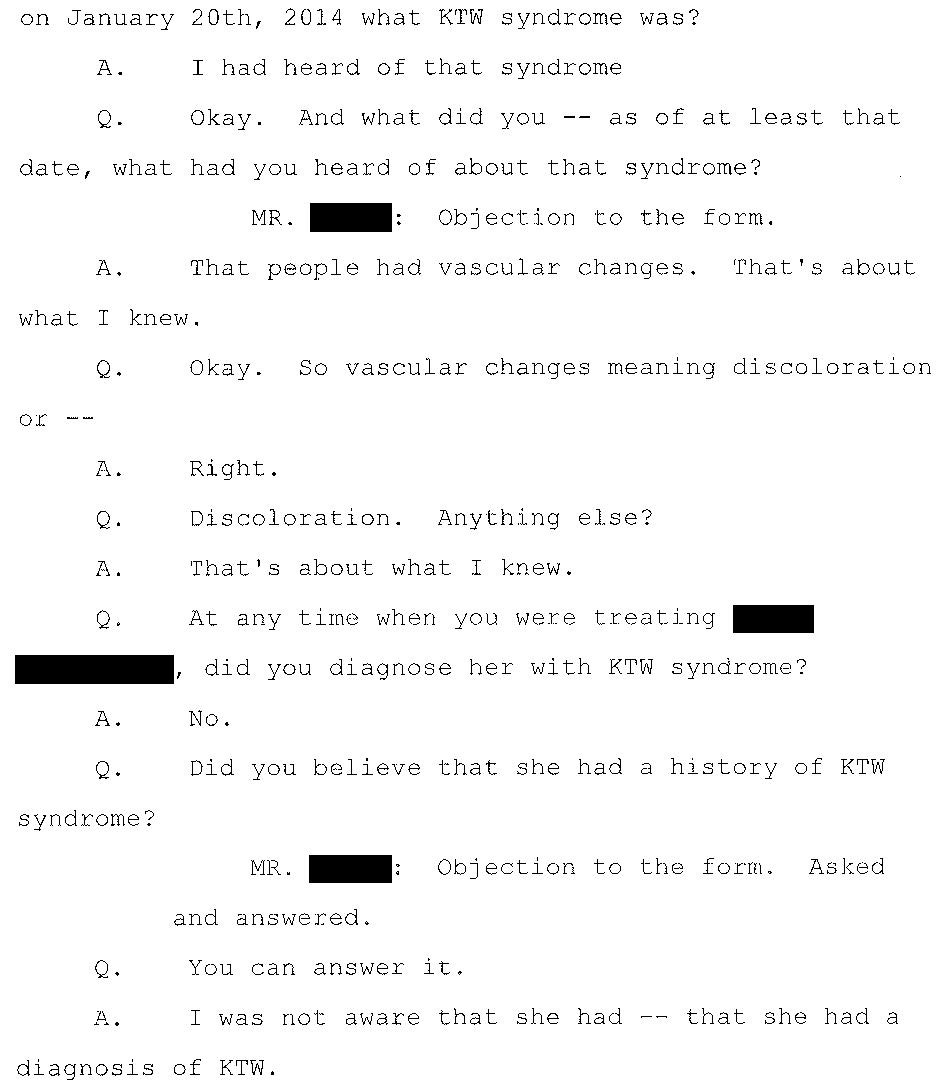Answer: Klippel-Trenaunay syndrome
The correct diagnosis for this week’s case was Klippel-Trenaunay syndrome (KTS).
Congratulations to Dr. John Do, MD who was the first to answer the question correctly! He read the case and answered it 9 minutes after the email was sent.
48 readers got the right answer, out of 120 responses.
Other popular but incorrect answers:
May-Thurner syndrome: This patient had right leg hypertrophy, whereas May-Thurner usually has left leg swelling (but rarely can occur in the right leg as well as pointed out by one astute respondent).
Sturge-Weber syndrome: Has significant overlap with KTS and can be difficult to differentiate.
Kasabach-Merritt syndrome
Proteus syndrome
The case described 2 parts of the classic triad:
Port-wine stain. This was described in the PA’s note as a “hemangioma”, which is an inaccurate description but common mistake. It is often described as a birthmark by lay people.
Unilateral limb hypertrophy. This is more commonly seen in the legs than the arms. The husband was referring to this feature in the excerpt from his deposition.
Venous or lymphatic abnormalities. Varicose veins are common.

Patients often have AVMs, which can lead to thromboembolic disease as seen in this case.
The fact that this patient had KTS played a critical role in the malpractice case.
The plaintiff argued that if the doctors and PA had appropriately made the diagnosis of KTS, they would have known that she was at risk for PE and would have been more aggressive with the workup.
To make things worse for the defense, they found evidence that the patient had already been diagnosed with KTS years earlier.
During a pregnancy she was found to have unusual vascular malformations in her uterine wall and was diagnosed by 2 MFM physicians.
This is the letter they sent to her OB in 1997:
While this letter never made it to the patient’s PCP, the plaintiff argued that they had a responsibility to understand her medical history when they took over her care in 2003.
One of the supervising doctors was deposed:
The PA was asked about her understanding of KTS:
MedMalReviewer Analysis:
I honestly do not think that knowing she had KTS would have changed the outcome. The presentation was atypical for PE, even if they had known the patient had a predisposition to thrombembolic disease. This is an extremely rare disease and many physicians have little knowledge about it or the potential complications.
The PA’s documentation made this case very hard to defend. If she had simply documented the reasons she felt it wasn’t a PE, it could have been defended (even though it was an incorrect assessment). We are not responsible for making a correct diagnosis every time, but we are expected to make logical and rational decisions. Documenting a logical and rational explanation about why she did not suspect PE (even though incorrect) could have provided grounds for a vigorous defense.
Readers of this newsletter now have a better understanding of KTS and it’s acute complications. Aside from thrombembolic disease such as stroke, DVT, and PE, patients can also have bleeding complications from AVMs. These can include GI or intracranial bleeding.
A new case goes out only to paying subscribers on Monday.
To improve your medical knowledge and understanding of the legal system, pick up a subscription today.
New cases are published each week.








